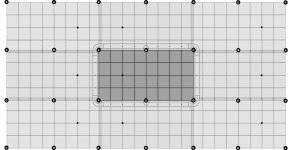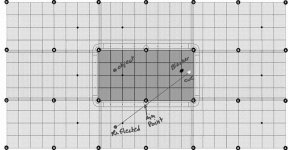AZers,
I am playing on a bar team where I get called on alot to coach during a match. Often it involves kicking or banking out of trouble. I have created this diagram to use as a tool to help my team mates visualize the kick/bank. During a match we'd layout the key balls on the center table, mirror as appropriate, and then show the aim line relative to the diamonds so it's something concrete.
A couple of questions: 1) do you think inexperienced players will grasp the concept quickly? 2) Can they be successful with center ball, medium hit, single rail kicks using a tool like this? and 3) Is it laid out correctly ?(created for a 44 x 88 table- I'll have to adjust for 39 x 78 bar box. The tables are overlapped by the width of a ball)
Thanks,
Steve
I am playing on a bar team where I get called on alot to coach during a match. Often it involves kicking or banking out of trouble. I have created this diagram to use as a tool to help my team mates visualize the kick/bank. During a match we'd layout the key balls on the center table, mirror as appropriate, and then show the aim line relative to the diamonds so it's something concrete.
A couple of questions: 1) do you think inexperienced players will grasp the concept quickly? 2) Can they be successful with center ball, medium hit, single rail kicks using a tool like this? and 3) Is it laid out correctly ?(created for a 44 x 88 table- I'll have to adjust for 39 x 78 bar box. The tables are overlapped by the width of a ball)
Thanks,
Steve

